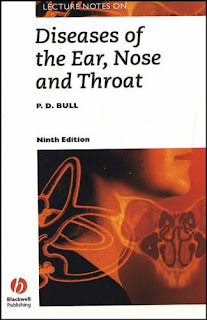I believe many would have been curious about the Year 3
horror posting, which is the O&G posting. So, here I am trying to give a general idea on how is it like to go through this posting. O&G is a posting where your nightmare comes true, but it is also a posting which you’ll learn the best, and fun to think of after you passed through it. In short, it’s a fun posting which you’ll never want to go through twice if you are given an option to choose.
Generally, all the students in a posting would be assigned into 4 different wards, namely
Red Ward and
Orange Ward on the 1st floor while
Yellow Ward and
Green Ward on the 2nd floor. In each ward, you’ll be divided into smaller groups of 4, with one doctor specialist and one registrar(Masters student) assigned to supervise and guide you through your posting.
Each ward has a different learning style and environment, so be sure to check around and ask the seniors what to expect of in each ward. The wards may differ in styles of history taking, management and case presentation. So, avoid being scolded by preparing beforehand.
Furthermore, get to know your timetable inside out. Know where you are supposed to be at each day, whether if it is the wards, lecture hall, clinics or workshop. This is important, as you’ll soon find out that there are times when there are clashes and you’ll need to inform your supervisors.
Attendance and
punctuality are
VERY IMPORTANT in O&G, so failure to do so may result in the need to write a
showcause letter.
Please do note that there is a requirement to complete the logbook. The most important task would be to complete
5 observations and to 5 deliveries. Please do it as soon as possible as time is insufficient. At least complete the observation by the
2nd week of the posting and finish your deliveries hopefully by
5th week. Sometimes luck plays a part as there might not be any deliveries on your shift. You’ll be needing the 6th week onwards to concentrate on your O&G long case and case write ups if you haven’t do so. As the labor room shifts will be pre-arranged by your posting leader, you’ll need to arrange your time so that your shifts does not clash or deprive you of rest. Try exchanging shifts for a start.
Time management is crucial here.
Apart from the normal days in the wards, there are also
Consultant Ward Rounds(CWR) and
Specialist Ward Rounds(SWR). The whole posting would be divided into 4 groups not according to the wards, which the leader of the groups would have to arrange with the consultant or specialist as mentioned in the list given at the start of your posting. Again, please be punctual and remember to sign your attendance. The SWR and CWR may also clash with your daily timetable, so be ready to inform your group leaders. Group leaders would also have to confirm with the consultant or the specialist of the date, time, venue and the task required to prepare for the rounds, whether to clerk all the beds in a ward, in all the wards, or just find 2 representatives. It may differ from doctor to doctor, so be prepared at all times, even if you have to clerk a patient at night(7-9pm).
So, in short, below is a list of must-do tasks throughout the 1st 6 weeks:
- 2 partograms (1 normal and 1 abnormal), some supervisors demand 10
- 2 case write ups (1 obs case and 1 gyne case)
- 5 observations and 5 conducted deliveries
- Other logbook observation such as Caesarian Section, ERPOC, hysterectomy, and logbook procedures such as VE, medicine dispensing, venipuncture, etc.
The partograms and case write up templates can be downloaded at the sidebar from the O&G section.
Maybe I’ll write more about the places in O&G and how is it like to be polite and courteous in dealing with O&G doctors, otherwise you’ll receive a scolding from them.
Otherwise, be happy and stay cool. This is a posting you'll
never forget. :P



 All the best everyone!!
All the best everyone!!



 All the best everyone!!
All the best everyone!!













3 referrals:
Post a Comment